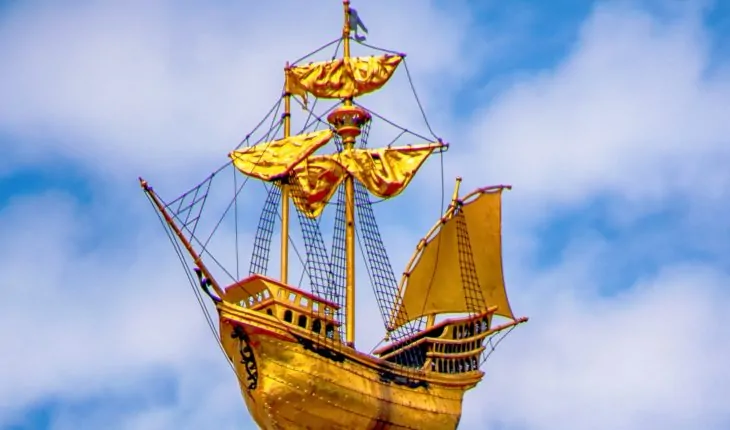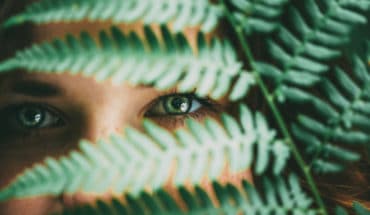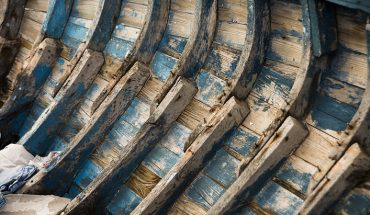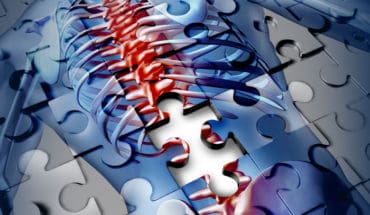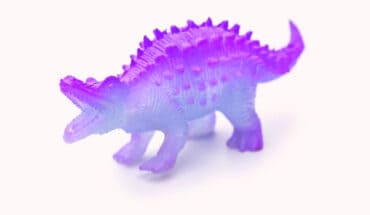Professor Hugo Montgomery, a consultant in intensive care medicine at UCL and Director of UCL Institute for Human Health and Performance will be giving a lecture entitled ‘diving on the Mary Rose’ at the medicine and diving conference KnO2wledge XII: The underwater world at the Royal Society of Medicine on Monday 18th November. This event will give fascinating insight into the physiology of diving, and how humans adapt to this harsh and extreme environment. Clinicians involved in the management of all forms of diving disease will share their expertise, including stories from those who have survived near-death experiences underwater. Speakers will also include Dr Richard Moon, Medical Director, Duke University, USA, who will give a talk on the history, pathophysiology and treatment of ‘bends’. Saturation diver Chris Lemons, survivor of a life-dangering incident in 2012, will conclude the programme with a first-hand account of ‘The Bibby Topaz’ incident.
Diving on the Mary Rose
“I was 4 when I was first taken snorkelling by a neighbour. When just 15, I learned to dive. Not long afterwards, a team was being formed to search for the wreck of the Henry VIII’s flagship ‘The Mary Rose’ which sank off Portsmouth in 1545. I applied to join. Back in those days, there was no commercial diving industry or certification and not a lot of ‘health and safety’ legislation!
I was accepted and joined the team for its summer seasons (the waters being too dangerous to dive in the winter. At the start, there was hardly anything visible in the mud at the time and no ships timbers at all. As we excavated, using ‘airlifts’ (underwater vacuum cleaners fashioned from dian pipes) ,we started to see the hull timbers. The ship was lying semi rotated on its side and we excavated between the decks. The water was clod, visibility poor, and currents strong- and we worked alone, without surface communications. There was always the risk of being swept from the site and into a major shipping channel. There were times when this happened, and they had to be rescued in small boats. Ten trenches were formed, demarcated by a grid of scaffold poles, cut across the wreck going from the foc’sle to the lower deck and ship’s keel. Each of us would be given a task, after a discussion with the archeologist and the last diver down: excavating, lifting an object, or triangulating/ surveying features. But luckily, over the whole time of the excavation, there was only one death.
We didn’t get confirmation it was the Mary Rose until we found the ship’s bell which had her name on it.
We also found lots of skeletons of the sailors who were lost. A lot of them were reburied at sea but we did recover and retain some skeletons from which we later took DNA samples so we could tell things about their life and where they came from. What we found was that many of the sailors on the Mary Rose came from much warmer climes than chilly Britain so they may have been mercenaries or press ganged. Some were black and there were quite a lot of very tall Welshmen who were the giants of their age. The skeletons of the long bow archers had characteristic features due to the huge loads they’d borne since their early years (training started aged 6): os acromiale, There were signs of injury in some: some chap had a partially healed wound caused by an arrow in his skull. He had obviously got lucky and escaped with his life.
Their bones also showed us that most of the sailors were healthy and well fed. One of the few places you could be guaranteed a nutritious diet was in the navy. There was some evidence of rickets caused by Vitamin D deficiency, but not much and we still find that deficiency today. Their teeth were actually quite good because they didn’t eat a lot of sugar in their diet. But some of their skulls did show signs of dental accesses.
We also found the barber surgeons chest and his implements including blood letting equipment and urethras syringes for treating STDs.
By the time we raised the Mary Rose, we were probably the best archeological salvage divers in the world. The Solent is not the safest place to do commercial diving and there are very strong currents/ Some of us remained working as divers, whether archeological or commercial. Others, like me, went on to other careers- albeit that I went on to gain my commercial diving licence. I trained to be a doctor but I have never stopped diving: many of us went on to work the wreck of an Etruscan vessel which sank of the West coast of Italy in 621BC, and a Phoenecian harbour. site in Sicily.
These days, I don’t dive so much. Time is a major limitation but that sort of deep diving, always on air, takes its toll. We all got the bends at some time or another. I can still breath hold for three and a half minutes and I’ve been offered the job as the medical doctor on an expedition in 2021 to search for he oldest shipwreck in the world deep in in the Black Sea. It will lie in the deep in the anoxic zone where there is no oxygen, so it could be very well preserved despite being upwards of 6000 years old. If we are lucky there may even be sails and rigging.
When human beings punched their way out of Africa, they made their way to the Black Sea on ships and then onto places like Japan 35,000 years ago. How old could these ships be?
When I look back at my time diving the Mary Rose, I can say it was the best time of my life.
- Diving on The Mary Rose - 6th November 2019

